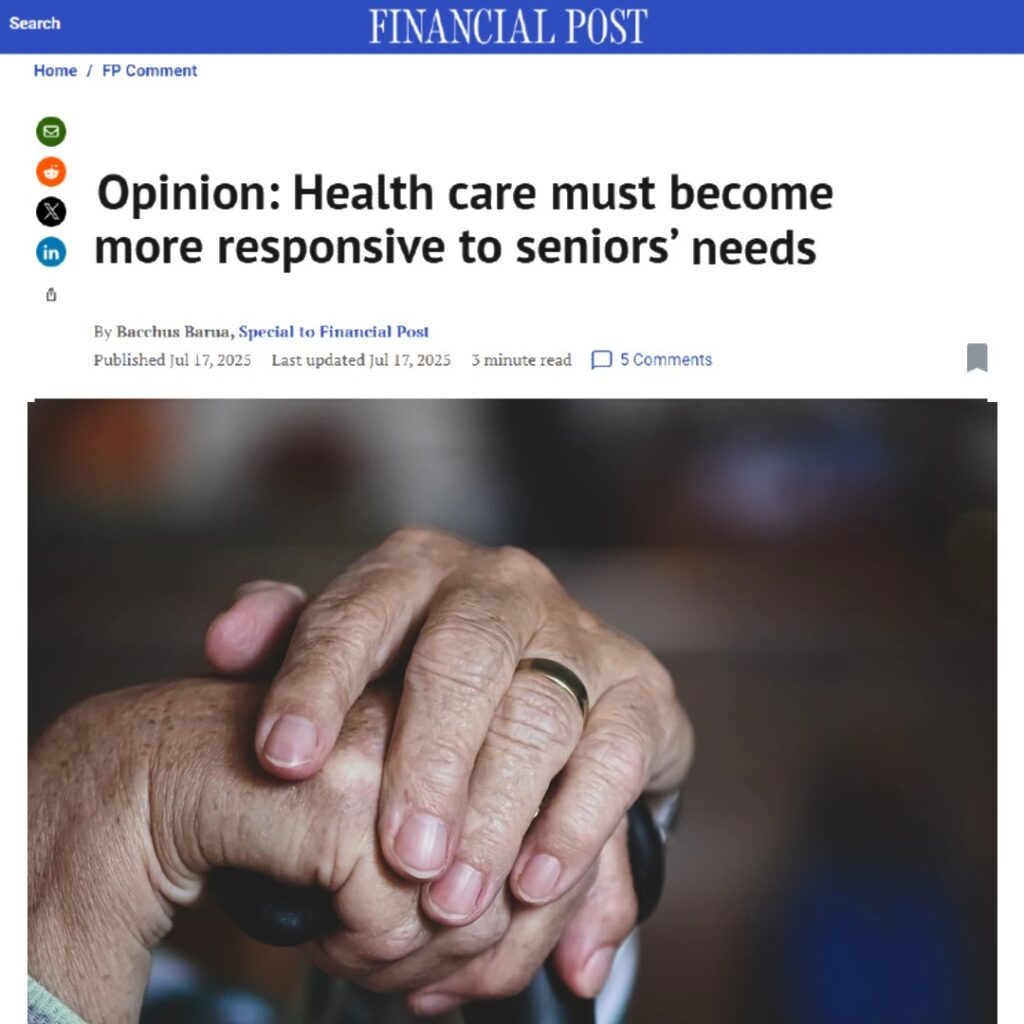As the average age continues to rise in Canada, it is more important than ever to ensure seniors receive timely access to quality health care. Unfortunately, new data from the Canadian Institute for Health Information (in conjunction with the Commonwealth Fund) reveal that our older population experiences longer waits for primary care than seniors in our peer countries do.
FINANCIAL POST COLUMN: Health care must become more responsive to seniors’ needs

The survey, which polled adults over the age of 65 in 10 high-income countries, found that only 25 per cent of Canadian seniors were able to get a same-day or next-day doctor’s appointment last year. That compares with 39 per cent in the 10-country average and 63 per cent in top-performing Netherlands. It’s also worse than in 2017, when 41 per cent of Canadian seniors were able to get same-day or next-day access to primary care.
Things weren’t any better for after-hours care. Canada’s seniors had the hardest time (i.e., the largest percentage who reported it was “very difficult”) getting care in the evenings or on weekends and holidays without going to the hospital emergency department. Canada also had the highest percentage of seniors report dissatisfaction with the quality of treatment they received.
It’s not just older Canadians who receive poor access to timely care, of course. Data from the Fraser Institute indicate that the average wait for all patients for elective (a.k.a. “scheduled”) care last year was almost seven months. SecondStreet.org research has found that at least 15,474 Canadians died while waiting for treatment in 2023-24. However, the deteriorating state of timely access to care for seniors needs to be addressed immediately. They’re the highest-cost users of our health-care services, and the silver tsunami their demographic represents simply cannot be avoided.
At the very least, governments need to tell patients when they will not be receiving timely care. Manitoba’s NDP government recently directed cardiac-care staff to ensure patients are informed if their wait time will exceed recommendations. This decision came after SecondStreet.org and a deceased patient’s family suggested “Debbie’s Law,” which would legally require regional health districts to tell patients if wait times for life-saving treatment will be exceeding guidelines.
We also need to expand health-care capacity using non-government clinics. Saskatchewan is a notable example of how this strategy can shorten wait times, as well as a cautionary tale of the importance of continued innovation. Although the province successfully tackled wait times for elective surgery using this approach during its four-year surgical initiative (2010-2014), a 2024 study I co-authored while at the Fraser Institute showed that wait times have skyrocketed ever since. One reason is that surgical volumes roughly plateaued during the subsequent five-year period, with only marginal expansions to partnerships with non-government clinics. Another is that the Trudeau government threatened to fine the province for certain types of additional experimentation — such as its “two-for-one” MRI policy, under which patients could pay for MRI scans at for-profit private clinics, so long as the clinic also provided a free scan to a patient on the public wait list. The fines put a chill on further experimentation with private partners.
But not all blame lies with the federal government. Saskatchewan could have pursued other innovative solutions that would not have drawn the same ire from the Trudeau Liberals — such as reforming hospital remuneration.
Hospitals need to be funded, not according to historical formulas, but in ways that give them incentives to provide more care, as Quebec and more recently Alberta have done. “Activity-based funding,” which is widely used elsewhere in the developed world, pays hospitals every time they provide a service to patients. It’s only common sense: pay providers according to the type and complexity of procedures they perform.
In sum, we need rapid reform to align our health-care policies more closely with those in better-performing peer countries like Switzerland, the Netherlands and Germany. Do you want it to be your parent or grandparent or even yourself who runs out of time while Canadian governments try to get their acts together?
Bacchus Barua is research director at SecondStreet.org.
This column was originally published in The Financial Post on July 17, 2025.
You can help us continue to research and tell stories about this issue by making a donation or sharing this content with your friends. Be sure to sign up for our updates too!


